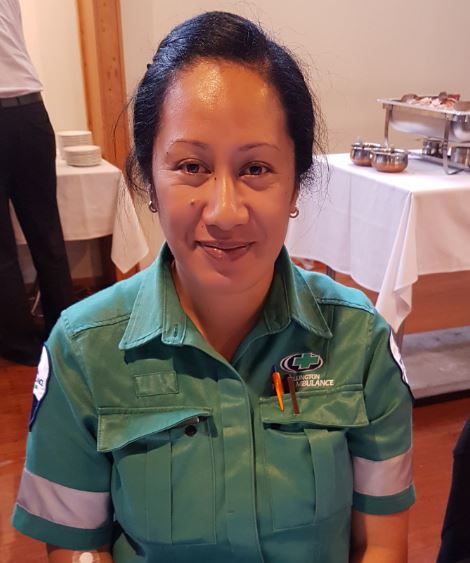 Porirua resident, Malia Kerekere of Wellington Free Ambulance, knows a thing or two about heartbeats. Speaking at Plimmerton Rotary on 13th March, Malia explained that her job description was ‘heartbeat trainer’. “We are often called event medics or paramedics, but the human heart is at the centre of most of our work.”
Porirua resident, Malia Kerekere of Wellington Free Ambulance, knows a thing or two about heartbeats. Speaking at Plimmerton Rotary on 13th March, Malia explained that her job description was ‘heartbeat trainer’. “We are often called event medics or paramedics, but the human heart is at the centre of most of our work.”
Serving the Wellington region from Peka Peka in the north to Mount Bruce in the east, Wellington Free Ambulance was the only free ambulance service in New Zealand. “All the rest charge their patients and they actually charge quite a bit. We have Sir Charles Norwood, former Mayor of Wellington, to thank for our service here in Wellington. In 1927 he was the driving force behind the creation of Wellington Free.”
Malia gave her audience a short course in dealing with a person suffering from a sudden heart problem. “When a person’s heart stops beating, this is called cardiac arrest. This can happen to anyone of any age at any time.
“The first thing to do is to lie them down on their back on a flat surface. Then dial 111, explain the situation and be sure to tell the emergency service where you are located. Make sure you do this
“If the person’s heart has stopped, CPR should be commenced as soon as possible. This involves pressing down on the person’s sternum in a quick pumping action. The average human heart beats at 72 beats a minute. CPR requires you to pump at 120 beats per minute, which is two beats every second until help arrives.”
 Malia explained that you should kneel down as close as possible to the side of the patient. “Place one of your hands over the other, keep them together, and keep your arms straight. Press down on the sternum, which is in the centre of the chest in line with the patient’s armpits (under their arms).
Malia explained that you should kneel down as close as possible to the side of the patient. “Place one of your hands over the other, keep them together, and keep your arms straight. Press down on the sternum, which is in the centre of the chest in line with the patient’s armpits (under their arms).
“Keep your arms straight, and bend from the waist as you pump, because this will give you the strength to keep going for a longer time.”
If there was a defibrillator in the vicinity, this could be used to treat the patient. “Defibrillators talk to you and give you instructions on what you need to do. They are wonderful machines. They give the patient an electric shock which is designed to re-start the heart.”
If you should ever encounter someone who had had a cardiac arrest, there are some important rules that Malia advised should be followed. She called them D R S.
One: Is the patient, or you, in danger? If so, do what you can to alleviate this danger.
Two: Check to see if the patient is responsive. If not, then CPR is indicated.
Three: Send for help either by phone or get someone else to go for help.
